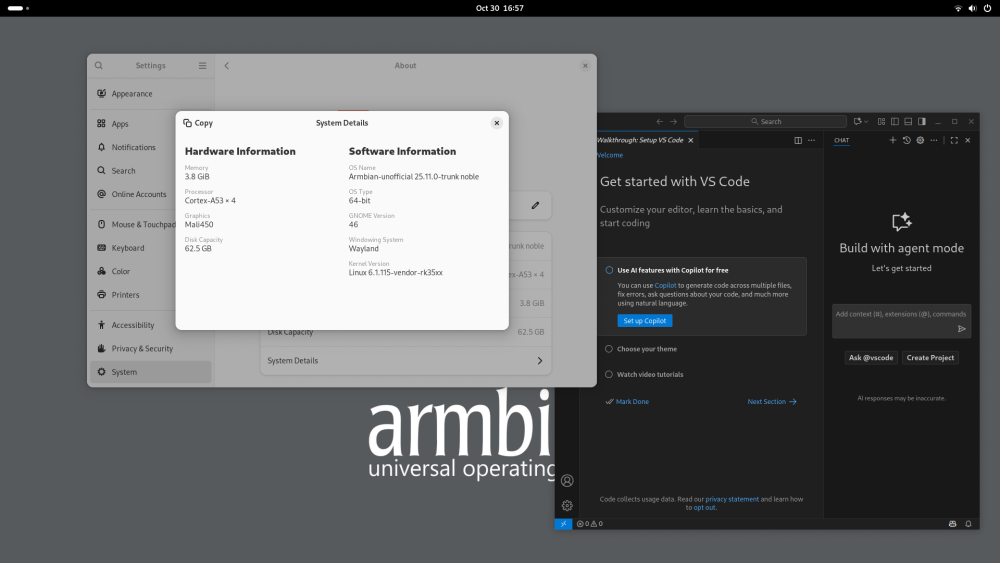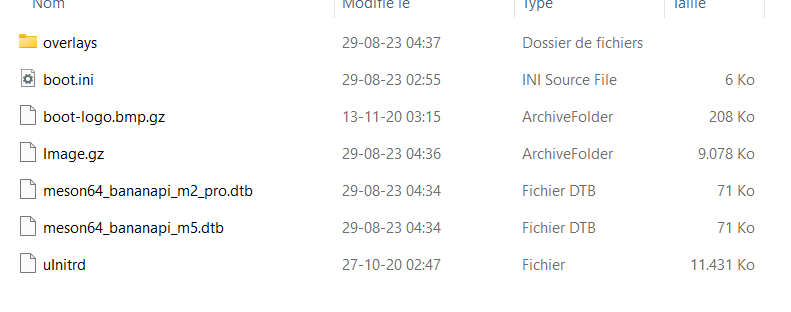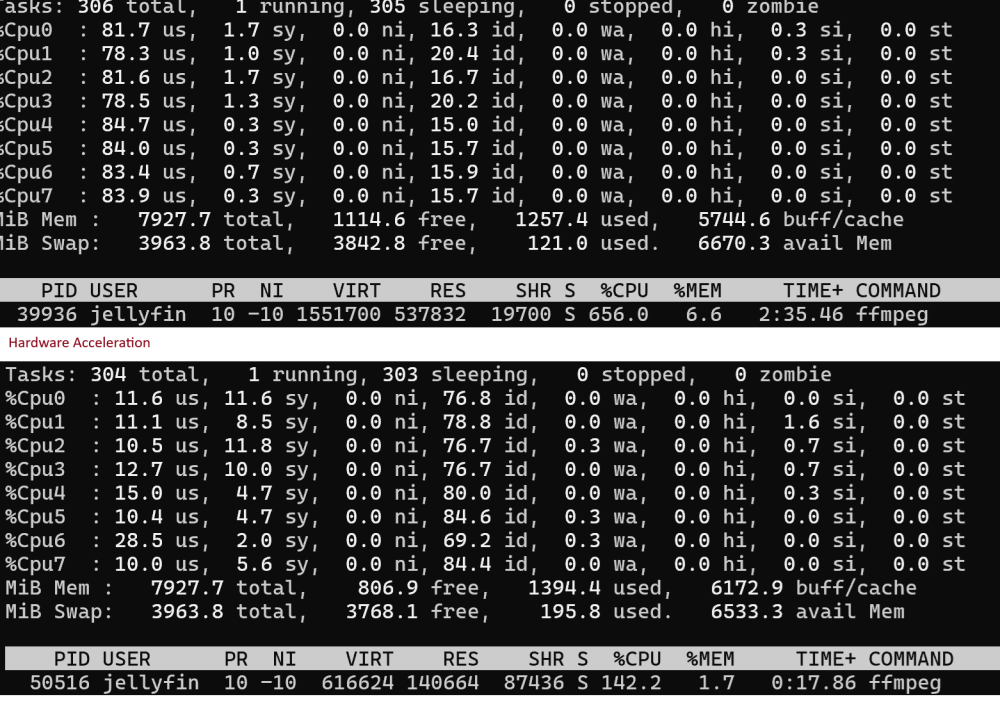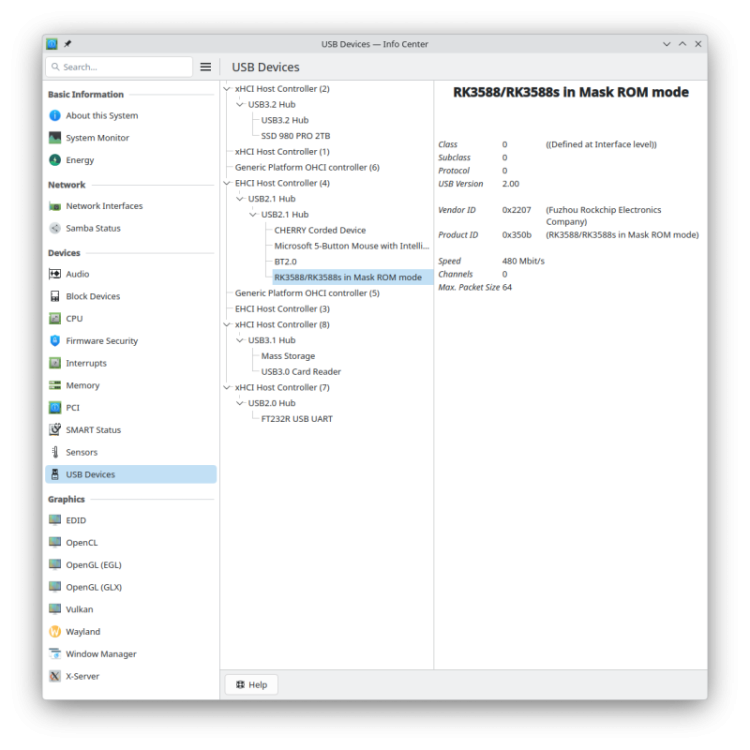All Activity
- Today
-
@GmP ok, so the leds in the previous dtso are wrongly addressed? Because in the latest dtso I see 7 leds addressed on segment 0, instead the previous dtso declares 4 sparsely addressed leds. edit: note also that your board is T98_RK3318, not T9_RK3318
-
@jock I have also tested the driver for a rk3318-T9, please see below in case it is useful for the device tree overlay.
-

Help wanted to test a new OpenVFD alternative
GmP replied to Jean-Francois Lessard's topic in Amlogic meson
Here you are the correct dtso for the latest version of the tm16xx / kernel. Note that this is not the same model of rk3328-t9.dtso found in https://github.com/jefflessard/tm16xx-display however I do think it will work with that model as well. The automatic generated dtso file for the rk3328 from vfd seems to be icorrect as it is addressing segment 7 of fd655. rk3318-t9.dtso -

Helios64 - Armbian 23.08 Bookworm issues (solved)
BipBip1981 replied to ebin-dev's topic in Rockchip
Hi, my feedback with rk3399-kobol-helios64.dtb-6.12.xx-L2-hs400-opp and agressif fancontrol setting like this: # Helios64 PWM Fan Control Configuration # Temp source : /dev/thermal-cpu INTERVAL=10 FCTEMPS=/sys/devices/platform/p6-fan/hwmon/hwmon6/pwm1=/sys/devices/virtual/thermal/thermal_zone0/hwmon0/temp1_input /sys/devices/platform/p7-fan/hwmon/hwmon5/pwm1=/sys/devices/virtual/thermal/thermal_zone0/hwmon0/temp1_input MINTEMP=/sys/devices/platform/p6-fan/hwmon/hwmon6/pwm1=30 /sys/devices/platform/p7-fan/hwmon/hwmon5/pwm1=30 MAXTEMP=/sys/devices/platform/p6-fan/hwmon/hwmon6/pwm1=50 /sys/devices/platform/p7-fan/hwmon/hwmon5/pwm1=50 MINSTART=/sys/devices/platform/p6-fan/hwmon/hwmon6/pwm1=20 /sys/devices/platform/p7-fan/hwmon/hwmon5/pwm1=20 MINSTOP=/sys/devices/platform/p6-fan/hwmon/hwmon6/pwm1=20 /sys/devices/platform/p7-fan/hwmon/hwmon5/pwm1=20 MINPWM=20 is: All it's Okok Without the tunning file DTB and Fancontrol, the nighmare restart. Today, update, original DTB file restore and CRASH when Luks begin to unciffer my DDs Il restore DTB file and my fancontrol setting and: Return to Okok situation. To conclude, i use my helios without problem when this files is installed. My helios64 always crash if i return to original setting after a update. -
Thanks for the reply. My question was worded improperly. It should have been "Latest compile for odroid xu4 doesn't have a desktop. Any reason why?" Sorry
-
Yes you are perfectly right. It took me some "minutes" to figure out. Just in case I do have the overlay dtso for the previous tm16xx version. No scrolling message however. Use ../value instead. rx3318-H50.dtso-old.txt
-
@GmP thanks for the contribution, but I want to advice you that the driver changed in kernel 6.17 due to kernel developers requests and suggestion, so that device tree overlay is suitable only up to 6.16 I made a pull request to include the device tree overlays: https://github.com/armbian/build/pull/8848
-
I also happened to get an X88pro13 TV box on my desk. Since it promises good performance, I've been experimenting with getting Armbian running.. My first attempts look promising. Armbian-update and armbian-config are working. It could be a good platform for Smart-Home, Console and desktop Armbian is running well. _ _ _ __ __ _ _ _ /_\ _ _ _ __ | |__(_)__ _ _ _ ___ _ _ _ _ ___ / _|/ _(_)__(_)__ _| | / _ \| '_| ' \| '_ \ / _` | ' \___| || | ' \/ _ \ _| _| / _| / _` | | /_/ \_\_| |_|_|_|_.__/_\__,_|_||_| \_,_|_||_\___/_| |_| |_\__|_\__,_|_| v25.11 rolling for Hugsun X88pro running Armbian Linux 6.1.115-vendor-rk35xx Packages: Ubuntu stable (noble) Support: DIY (custom image) IPv4: (LAN) 192.168.178.71 (WAN) 130.185.10.185 Performance: Load: 82% Uptime: 0 min Local users: 3 Memory usage: 7% of 3.82G CPU temp: 41°C Usage of /: 10% of 58G RX today: 262 KiB Commands: Configuration : armbian-config Monitoring : htop HDMI output, LAN, Wi-Fi, and USB 2.0 are supported. Audio not tested yet. Bluetooth and USB 3.0 aren't working yet and require further investigation. IR remote control is also not working. I've shared my results and instructions for creating the image at: https://github.com/joilg/x88pro A ready-made image for an Armbian server with a console interface is available at: https://github.com/joilg/x88pro/tags A desktop version can also be easily created. Please try this version and let me know if you encounter any problems. johlnx
-
If you need an image without desktop, there is always the build framework which allows you to build any combination of kernel and userspace and desktop you want.
-
More informations : after i wrote an armbian image on SD card with USBImager on my windows desktop (with verified checked) , The SD card is not readable , it appears as not formatted in windows. But if i write the image from BPI site, i can read the partition on the SD card and see the files on it. Maybe it helps
-
@Aroldo Bossoni The optimal would be understanding the reason why the watchdog triggers, but could be a difficult task without a hint because of the closed source proprietary trust os. The easiest thing is to provide armbian images with the opensource trust os rather than the proprietary, which is totally feasible because it just requires to swap a file in the armbian build scripts. That would blow the issue away, but unfortunately the proprietary trust os provided DDR scaling and virtual poweroff. The latter is a seldom used feature, but the DDR scaling provided a dramatic improvement in performance and it is hard to give up on that. Swapping the things at runtime is not savvy: when u-boot updates, the proprietary trust os will be reinstalled overwriting whatever you put in there. I would be happy with opensource Trust OS and no runtime DDR scaling, but stil having it at a fixed decent rate (660MHz, instead of the default 330MHz), but some boards do not boot at all when they are instructed to boot at 660MHz.
-
i`ll already fried that lcd. So this is the end Because short circuit is been in lcd, orange is a live for now. try to move on hdmi lcd+touch. Thanks for U`r help robertoj.
-
I confirm this issue. For the purposes of this experiment, I replaced the power supply with a similar one equipped with an LED. The power supply is connected to an electrostatic precipitator equipped with a power button. We turn on the electrostatic precipitator using the button. The power supply LED lights up. The Odroid M1 turns on and boots normally. We shut down the Odroid M1. We turn off the electrostatic precipitator using the button. After 2 seconds, we turn it back on. The Odroid M1 does NOT turn on again. Therefore, replacing the power supply did NOT solve the problem. Experimentally, we have determined that the Odroid M1 does NOT turn on again as long as the power supply LED remains lit, even when the electrostatic precipitator is turned off. Therefore, the issue lies with the residual charge in the power supply capacitors. If, with the electrostatic precipitator turned off, we wait until the power supply capacitors are depleted and the power supply LED goes out, then when we turn on the electrostatic precipitator again, the Odroid M1 turns on normally and boots normally. Meanwhile, the Raspberry Pi doesn't have this power supply issue. Therefore, this is a design flaw in the Odroid M1.
-
I would love to get this or support with the devices I own. I think we should continue developing Mini-AndroidTV-PCs as easy as possible and give that junk devices a sensful feasible life.😃
-

RK3588 - Setting Up Mali & Hardware Acceleration
Gian Luca replied to David N's topic in Orange Pi 5 Plus
I installed the .deb package you suggested, however I don't think everything went as it should have: the device /dev/mali0 is still missing. I understood that this device must be present in order to be sure the device is used correctly. Is it right ? The kernel of Armbian Ubuntu Noble also has been updates: the version is 6.1.115-vendor-rk35xx now. The output of lsmod command is: Module Size Used by rk805_pwrkey 16384 0 nvmem_rockchip_otp 20480 0 r8169 77824 0 rockchip_cpuinfo 16384 1 nvmem_rockchip_otp adc_keys 16384 0 -
Thank you @Werner it just worked perfectly once disabled. That'll teach me to enable things. Beyond lower CPU usage compared to a USB to SATA adapter, I have some performance benchmarks. // write dd if=/dev/zero of=testfile bs=1M count=3000 oflag=direct 3145728000 bytes (3.1 GB, 2.9 GiB) copied, 11.382 s, 276 MB/s (usb) 3145728000 bytes (3.1 GB, 2.9 GiB) copied, 9.74696 s, 323 MB/s (sata) // read dd if=testfile of=/dev/null bs=1M iflag=direct 3145728000 bytes (3.1 GB, 2.9 GiB) copied, 10.8119 s, 291 MB/s (usb) 3145728000 bytes (3.1 GB, 2.9 GiB) copied, 9.09585 s, 346 MB/s (sata) And some Jellyfin CPU vs Hardware accelerated transcoding usage:
-
Hello everyone! I'm willing to develop a script that automates firmware, u-boot, and ROM compatibility testing with the boards via OTG. I've thought of a workflow something like this: 1. Download a list of files by type from several different sources. 2. Extract files from pre-built images, ROM, loader, u-boot. 3. Check for duplicate files by size and checksum. 4. Apply and test in stages: ROM, loader, u-boot, kernel, rootfs, network, video. 5. Log what worked and what went wrong. 6. Since this process can take hours, emit a beep when user interaction is needed. What I need help with from you: Is this idea feasible? Will it produce results and facilitate the implementation process on rk322X boards? Can it be reused and adapted for other boards? I have little experience with ROMs and ARM firmware, but if it's feasible, I intend to create a public repository for the community to help me with the development. Thank you for your attention!
-
It all depends on the GUI apps you want to run. Web browser: at least 4GB Your own Python GUI app: 1GB 16GB storage is fine. "A more advanced build framework" only refers to the laptop you use to compile your own Armbian OS... it doesn't refer to the SBC where you will run it.
-
Is the repository https://users.armbian.com/jock/web/rk322x/ also offline for you? No need to authorize this post, I've already found the answer, thank you!
-
Attached the source overlay file for the tm16xx driver. All features working. See for details and thanks to https://github.com/jefflessard . rx3318-H50.dtso.txt
- Yesterday
-
Yes, CONFIG_TINYDRM_ILI9486 is the kernel module for that model of LCD with DRM. There's another thread explaining how to use it. I think you can use udev rules to force SPI LCD as /dev/fb0 and HDMI as /dev/fb1 always.
-
The mainline kernel has currently a shortcoming in USB-TYPEC support. FUKAUMI Naoki demonstrated a workaround for other devices that also works for the ODROID-M2.
-
Hi , I am trying to configure orangepi to turn on and turn off tv. I installed and used cec-ctl to register the boad as playbac device. And then was able to put the TV on standby mode via sudo cec-ctl --device /dev/cec0 --standby --to 0 but not able to find how to turn ON the TV. Can someone please help. Thanks Manish







